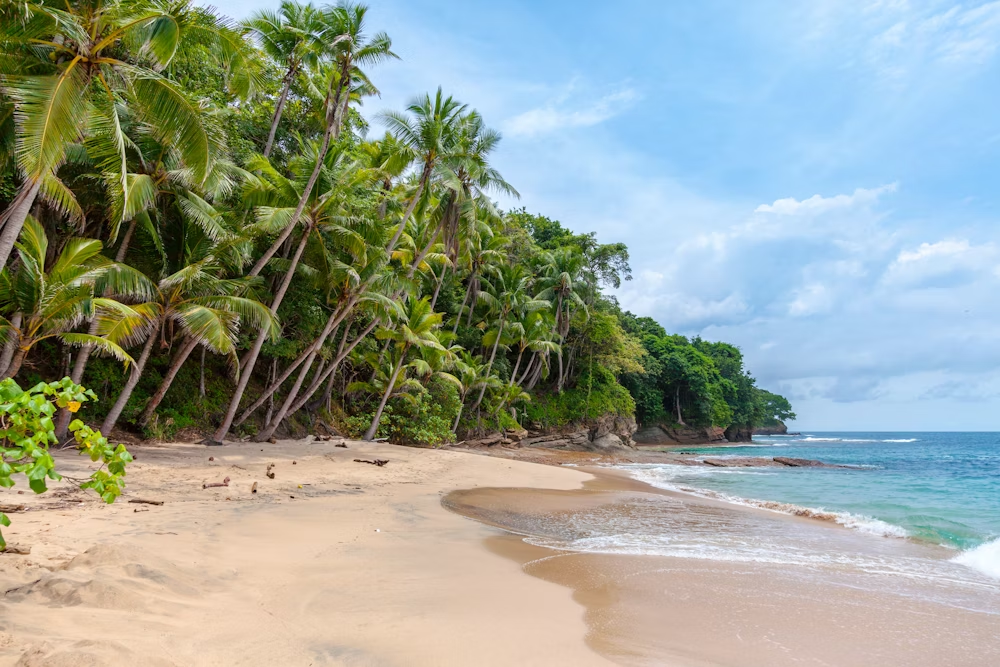
Thailand's economy represents one of Southeast Asia's most dynamic and resilient financial systems, with tourism serving as its cornerstone. For visitors to the Land of Smiles, understanding the economic landscape provides valuable context for travel experiences, helps explain pricing structures, and offers insights into both opportunities and challenges facing this beautiful country.
This comprehensive guide explores Thailand's economic structure, with special emphasis on its tourism sector and how it affects both visitors and locals.
Thailand's Economic Overview
Thailand has evolved from a largely agricultural economy into a diverse industrial and service-based economic powerhouse in the span of a few decades. Here's what makes Thailand's economy distinctive:
Key Economic Sectors
- Tourism - Contributing approximately 20% of GDP (pre-pandemic)
- Manufacturing - Particularly automotive, electronics, and food processing
- Agriculture - Thailand remains the world's largest rice exporter
- Services - Including banking, retail, healthcare, and education
- Digital economy - Rapidly growing e-commerce and tech sectors
Thailand has maintained impressive growth through decades of development, earning it the nickname "Asian Tiger Economy." Despite political challenges and global economic pressures, Thailand has shown remarkable resilience, particularly in its ability to attract international visitors.
The Tourism Industry: Thailand's Economic Engine
Thailand's tourism industry stands as one of the world's most successful, drawing visitors from across the globe to its beaches, temples, cuisine, and vibrant culture.
Tourism by the Numbers
- Visitors - Nearly 40 million international tourists annually before the pandemic
- Revenue - Approximately $60 billion USD in annual tourism revenue pre-COVID
- Employment - Directly and indirectly supporting over 6 million jobs
- Investment - Billions in annual investment in hotels, attractions, and infrastructure
While the COVID-19 pandemic severely impacted these figures, Thailand's tourism sector has shown strong recovery since reopening, with the country expecting to reach pre-pandemic visitor numbers by 2025.
Tourism Destinations by Economic Impact
Different regions of Thailand derive varying degrees of economic benefit from tourism:
- Bangkok - The capital attracts the most visitors and tourism spending, with its blend of luxury shopping, historic attractions, and nightlife
- Southern Beach Destinations - Phuket, Krabi, and Koh Samui generate massive tourism revenue through luxury resorts and beach activities
- Northern Cultural Centers - Chiang Mai and Chiang Rai attract cultural tourists who typically spend less per day but often stay longer
- Eastern Seaboard - Pattaya and surrounding areas draw high volumes of visitors from China and Russia
- Emerging Destinations - Areas like Isaan (Northeast Thailand) are developing tourism infrastructure to spread economic benefits more broadly
How Tourism Shapes Thailand's Economic Landscape
The dominance of tourism in Thailand's economy creates several notable effects that visitors may observe:
Dual-Pricing Economy
One of the most noticeable economic features for visitors is Thailand's dual-pricing system, where:
- Many attractions charge different prices for Thais and foreigners
- National parks, historic sites, and some transportation typically have dual pricing
- The practice reflects the significant income disparity between average Thai incomes and those of international visitors
While sometimes controversial among expatriates and frequent visitors, this practice helps maintain affordability for Thai citizens while generating additional revenue from tourism.
Seasonal Economic Cycles
Tourism creates distinct economic seasons across Thailand:
- High Season (November-March) - Jobs are plentiful, prices rise, and businesses thrive
- Shoulder Seasons (April-May, September-October) - Moderate visitor numbers create balanced economic activity
- Low Season (June-August) - Many tourism workers return to home provinces, and some businesses close temporarily
For budget-conscious travelers, visiting during shoulder or low seasons can provide substantial savings while still offering excellent experiences.
Traveler's Tip
During low season, you can often negotiate significant discounts (20-40%) on accommodations, especially for stays of a week or longer. Many hotels and guesthouses would rather offer reduced rates than have empty rooms.
Economic Geography: Where Tourism Dominates
Tourism's impact varies dramatically across Thailand's regions:
Tourism-Dependent Economies
Some areas derive the vast majority of their economic activity from tourism:
- Island Economies - Places like Koh Phi Phi, Koh Tao, and Koh Lanta see 80-90% of economic activity tied to tourism
- Phuket - Thailand's largest island has transformed from a tin mining economy to one dominated by tourism
- Pai - This northern mountain town has evolved from an agricultural community to a backpacker and domestic tourism hub
In these areas, even businesses not directly serving tourists (like local grocery stores or laundry services) depend on tourism workers' income.
Mixed Economies
Many Thai cities balance tourism with other economic sectors:
- Bangkok - The capital has a diversified economy with tourism as just one major component alongside finance, manufacturing, and retail
- Chiang Mai - Northern Thailand's hub balances tourism with education, agriculture, handicrafts, and digital nomad industries
- Hat Yai - This southern commercial center serves Malaysian visitors while maintaining strong manufacturing and agricultural sectors
Cost of Living and Travel Expenses in Thailand
Thailand's economic structure creates a unique cost environment for both locals and visitors:
Value Proposition for Visitors
Despite rising costs in recent years, Thailand continues to offer excellent value compared to Western countries:
- Accommodations - Range from $10 USD hostel beds to $30-100 USD comfortable hotels and $200+ luxury options
- Food - Street food meals for $1-3 USD, mid-range restaurant meals for $5-15 USD
- Transportation - Local buses from $0.30, taxis starting around $1.50 plus distance charges
- Activities - Temple visits for $3-6 USD, day tours from $30-100 USD depending on inclusions
Budget travelers can comfortably experience Thailand for $30-50 USD per day, while mid-range travelers might spend $100-200 USD daily.
Economic Disparities
Visitors should understand the significant income differences that shape Thailand's economy:
- The minimum wage in Thailand ranges from approximately 328-354 baht per day (roughly $10-11 USD)
- Many service workers in tourism (housekeeping staff, kitchen helpers) earn close to minimum wage
- The average monthly salary in Thailand is around 20,000 baht ($600 USD)
- What might seem like "inexpensive" prices to visitors represent significant costs for average Thais
This context helps explain the importance of tipping and fair negotiation when purchasing goods and services.
Experience Thailand with Local Knowledge
Want to explore Thailand's economy and culture with someone who understands both? Our premium membership connects you with Thai partners eager to share insider perspectives on their country's economic landscape.
The Rise of Digital Nomads and Long-term Tourism
Thailand's economy has adapted to embrace new forms of tourism that bring extended economic benefits:
Digital Nomad Ecosystem
Thailand has become a global hub for location-independent professionals:
- Co-working spaces have flourished, particularly in Bangkok, Chiang Mai, and island destinations
- Long-stay accommodations cater to monthly rentals with work-friendly amenities
- Digital nomad communities create ongoing economic impact through consistent spending
- Specialized visa programs are being developed to attract high-value long-term visitors
This segment represents higher per-visitor economic value as these visitors typically spend 3-6 months in the country rather than the average tourist's 9-day stay.
Retirement Economy
Thailand has also cultivated a significant retirement tourism sector:
- An estimated 150,000+ foreign retirees live in Thailand on retirement visas
- Popular retirement destinations include Chiang Mai, Hua Hin, Pattaya, and Phuket
- Retirement communities support specialized businesses from healthcare to western food imports
- This segment brings consistent year-round spending rather than seasonal peaks
Economic Challenges Facing Thailand's Tourism Sector
Despite its success, Thailand's tourism-dependent economy faces several significant challenges:
Environmental Sustainability
The economic pressure to maximize tourism sometimes conflicts with environmental preservation:
- Overtourism has damaged coral reefs and beaches in popular destinations
- Waste management systems struggle to handle tourism-generated waste
- Water scarcity affects some islands during peak tourist season
Thailand has begun addressing these issues through beach closures for rehabilitation (as with Maya Bay), plastic reduction initiatives, and sustainable tourism certification programs.
Economic Inequality
Tourism wealth is not always distributed equally:
- Many tourism businesses are owned by wealthy Thais or international corporations
- Front-line workers often receive minimal economic benefit despite being the face of the industry
- Rural areas with tourism potential may lack the infrastructure investment to capitalize on it
Community-based tourism initiatives are growing to address these disparities, giving visitors options to ensure their spending benefits local communities more directly.
Economic Resilience
The COVID-19 pandemic highlighted the vulnerability of tourism-dependent economies:
- Regions like Phuket saw unemployment rates above 50% during border closures
- Many tourism workers returned to agricultural work in their home provinces
- The crisis accelerated efforts to diversify Thailand's economy
Thailand is now implementing its "BCG Model" (Bio-Circular-Green Economy) to build economic resilience while developing more sustainable tourism practices.
The Future of Thailand's Tourism Economy
Several trends are shaping the evolution of Thailand's tourism-driven economy:
Quality Over Quantity
Thailand's tourism authorities have signaled a strategic shift:
- Greater focus on attracting higher-spending visitors rather than maximizing tourist numbers
- Development of luxury and unique experiences over mass tourism attractions
- Promotion of emerging destinations to distribute tourism benefits more widely
For visitors, this may mean more authentic experiences and less overcrowding at popular sites.
Digital Transformation
Thailand's tourism economy is rapidly digitalizing:
- Cashless payment adoption has accelerated throughout the tourism industry
- Mobile apps for transportation, food delivery, and activities have become ubiquitous
- Digital marketing targets specific visitor segments with personalized offerings
Even small vendors in markets increasingly accept QR code payments, making travel more convenient for international visitors.
Medical Tourism Growth
Thailand's high-value medical tourism sector continues to expand:
- World-class private hospitals draw patients worldwide for procedures costing 50-70% less than in Western countries
- Wellness retreats combine traditional Thai healing practices with modern health approaches
- Long-stay medical visitors generate significantly higher economic impact than vacation tourists
This sector is particularly important as it's less seasonal and more resilient during economic downturns.
Practical Economic Tips for Visitors
Understanding Thailand's economic landscape can help visitors make smarter financial decisions:
Currency and Payments
- Cash is still king in many areas, especially outside major tourist centers
- ATMs charge substantial fees (typically 220 baht/$7 USD), so withdraw larger amounts less frequently
- Credit cards are widely accepted in tourist businesses but may incur a 2-3% surcharge
- Money exchange rates are often better at dedicated exchange counters than at banks or hotels
Value-Conscious Decisions
- Transportation costs can be dramatically reduced by using local options (songthaews, local buses) instead of tourist-oriented services
- Food costs decrease substantially when you eat at local restaurants rather than tourist-oriented establishments
- Accommodation deals are often better when booking directly with smaller hotels rather than through international platforms
- Shoulder season visits can reduce costs by 30-40% while still providing excellent weather in many regions
Conclusion
Thailand's economy offers a fascinating case study in tourism-led development, with impressive successes and ongoing challenges. For visitors, understanding the economic context adds depth to travel experiences and helps navigate pricing, negotiations, and value assessment.
As Thailand continues to evolve its economic model, prioritizing sustainability and higher-value tourism, visitors can expect enhanced experiences that balance commercial development with cultural authenticity and environmental protection.
Whether you're visiting briefly or considering Thailand as a destination for digital nomad life or retirement, appreciating the economic foundations of this dynamic country will enrich your connection with the Land of Smiles and its wonderfully hospitable people.

